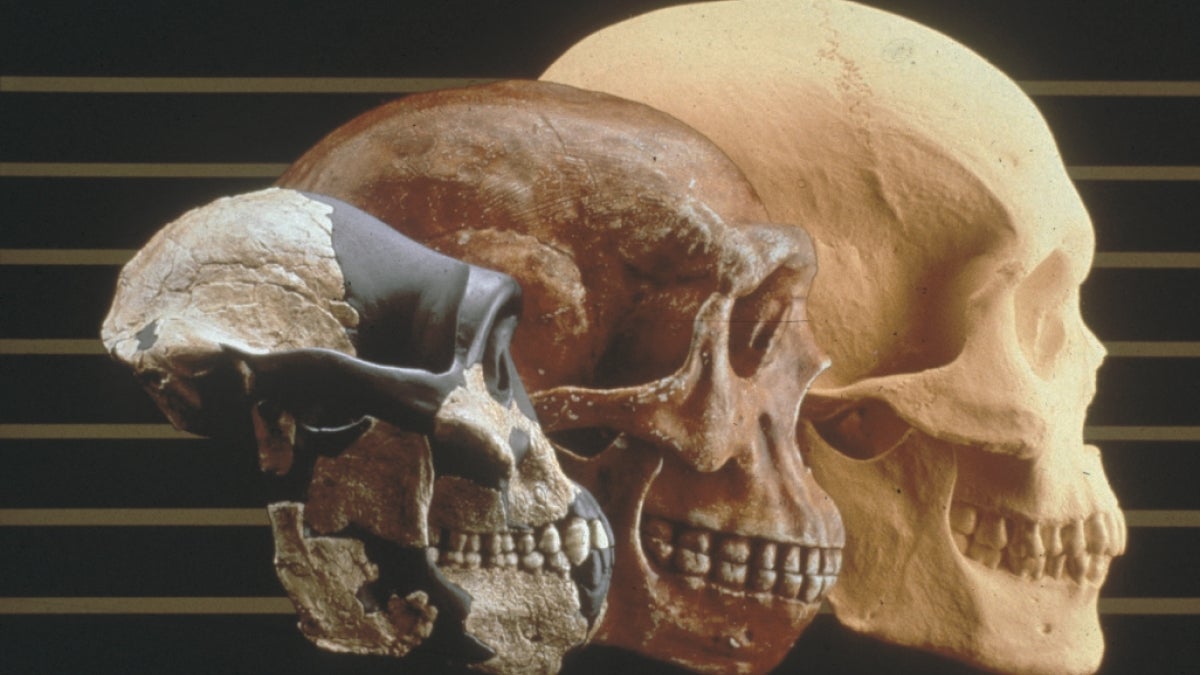The face you see in the mirror is the result of millions of years of evolution and reflects the most distinctive features that we use to identify and recognize each other, molded by our need to eat, breathe, see and communicate.
But how did the modern human face evolve to look the way it does? Eight of the top experts on the evolution of the human face, including Arizona State University’s William Kimbel, collaborated on an article published this week in the journal Nature Ecology and Evolution to tell this 4 million-year-old story. Kimbel is the director of the Institute of Human Origins and Virginia M. Ullman Professor of Natural History and the Environment in the School of Human Evolution and Social Change.
After our ancestors stood on two legs and began to walk upright, at least 4.5 million years ago, the skeletal framework of a bipedal creature was pretty well formed. Limbs and digits became longer or shorter, but the functional architecture of bipedal locomotion had developed.
But the skull and teeth provide a rich library of changes that we can track over time, describing the history of evolution of our species. Prime factors in the changing structure of the face include a growing brain and adaptations to respiratory and energy demands. But most importantly, changes in the jaw, teeth and face responded to shifts in diet and feeding behavior. We are, or we evolved to be, what we eat — literally!
Diet has played a large role in explaining evolutionary changes in facial shape. The earliest human ancestors ate tough plant foods that required large jaw muscles and cheek teeth to break down, and their faces were correspondingly broad and deep, with massive muscle attachment areas.
As the environment changed to drier, less wooded conditions, especially in the last 2 million years, early Homo species began to routinely use tools to break down foods or cut meat. The jaws and teeth changed to meet a less demanding food source, and the face became more delicate, with a flatter countenance.
Changes in the human face may not be due only to purely mechanical factors. The human face, after all, plays an important role in social interaction, emotion and communication. Some of these changes may be driven, in part, by social context. Our ancestors were challenged by the environment and increasingly impacted by culture and social factors. Over time, the ability to form diverse facial expressions likely enhanced nonverbal communication.
Large, protruding brow ridges are typical of some extinct species of our own genus, Homo, like Homo erectus and the Neanderthals. What function did these structures play in adaptive changes in the face? The African great apes also have strong brow ridges, which researchers suggest help to communicate dominance or aggression. It is probably safe to conclude that similar social functions influenced the facial form of our ancestors and extinct relatives. Along with large, sharp canine teeth, large brow ridges were lost along the evolutionary road to our own species, perhaps as we evolved to become less aggressive and more cooperative in social contexts.
“We are a product of our past,” Kimbel said. “Understanding the process by which we became human entitles us to look at our own anatomy with wonder and to ask what different parts of our anatomy tell us about the historical pathway to modernity.”
More Science and technology

Will this antibiotic work? ASU scientists develop rapid bacterial tests
Bacteria multiply at an astonishing rate, sometimes doubling in number in under four minutes. Imagine a doctor faced with a patient showing severe signs of infection. As they sift through test…

ASU researcher part of team discovering ways to fight drug-resistant bacteria
A new study published in the Science Advances journal featuring Arizona State University researchers has found vulnerabilities in certain strains of bacteria that are antibiotic resistant, just…

ASU student researchers get early, hands-on experience in engineering research
Using computer science to aid endangered species reintroduction, enhance software engineering education and improve semiconductor material performance are just some of the ways Arizona State…
